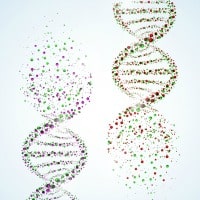It is speculated that a build-up of lifelong cumulative DNA damage may cause cells to enter an irreversible dormant state known as senescence. Cellular senescence is believed to be responsible for some of the telltale signs of aging, such as weakened bones, less resilient skin and slow-downs in organ function. DNA damage also seems to play a role in conditions called progerias, which cause premature aging; mutations in genes responsible for DNA damage repair are found in progeric individuals. Serge Y. Fuchs, from the University of Pennsylvania (Pennsylvania, USA), and colleagues explored the role of the chemical messenger interferon, a molecule that is naturally produced by the body in response to invading pathogens such as viruses. The researchers found that interferon signaling ramps up in response to double-stranded DNA breaks and that this signaling prompts cells to enter senescence. However, when the team inactivated the interferon signaling pathways in a mouse model of progeria, they were able to extend the animals’ lives. These mice were more fertile, had less gray hair and were larger and more robust than animals in which the interferon pathway was still active. The study authors submit that: “These data identify DNA-damage-response-induced [interferon] signaling as a critical mechanism that links accumulating DNA damage with senescence and premature aging.”
Pathway of Premature Aging
Yu Q, Katlinskaya YV, Carbone CJ, Zhao B, Katlinski KV, Fuchs SY, et al. “DNA-Damage-Induced Type I Interferon Promotes Senescence and Inhibits Stem Cell Function.” Cell Rep. 2015 May 5;11(5):785-97.
RELATED ARTICLES




